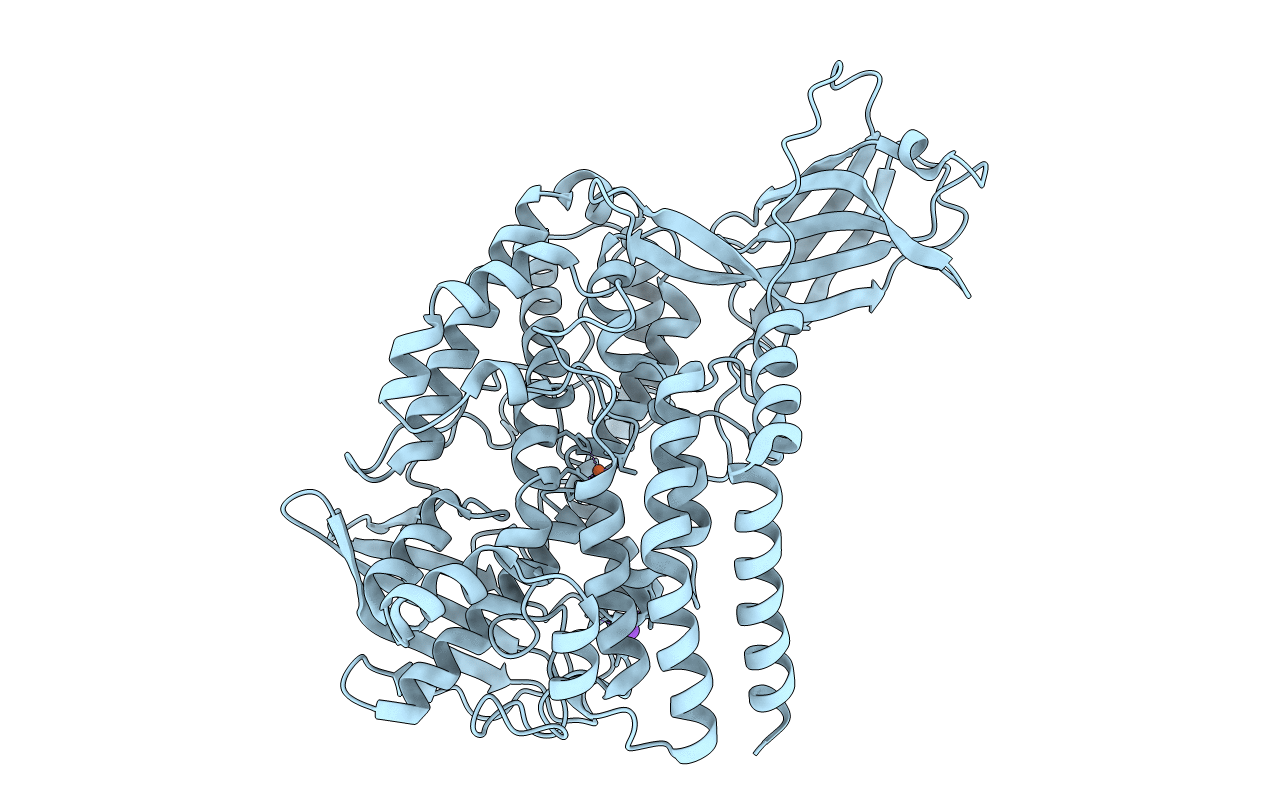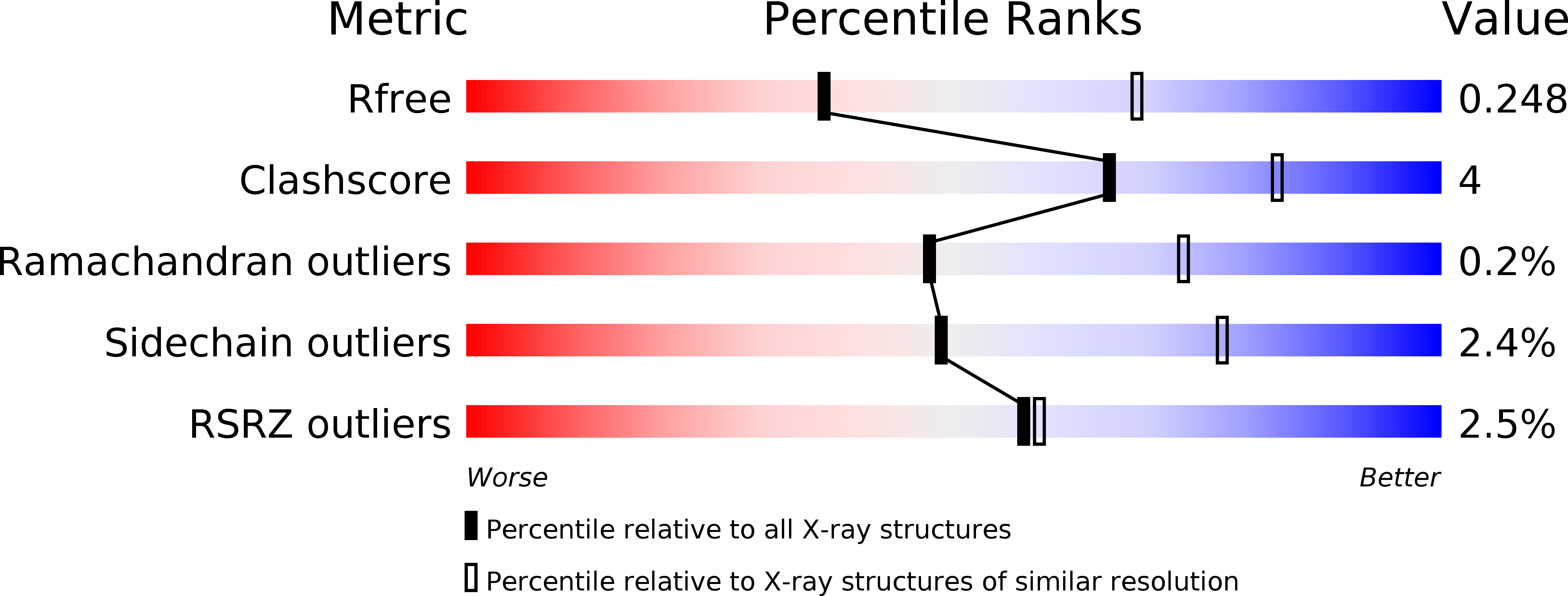
Deposition Date
2015-11-03
Release Date
2015-12-23
Last Version Date
2024-05-08
Entry Detail
PDB ID:
5EK8
Keywords:
Title:
Crystal structure of a 9R-lipoxygenase from Cyanothece PCC8801 at 2.7 Angstroms
Biological Source:
Source Organism:
Cyanothece sp. (strain PCC 8801) (Taxon ID: 41431)
Host Organism:
Method Details:
Experimental Method:
Resolution:
2.70 Å
R-Value Free:
0.24
R-Value Work:
0.19
R-Value Observed:
0.20
Space Group:
P 64 2 2


